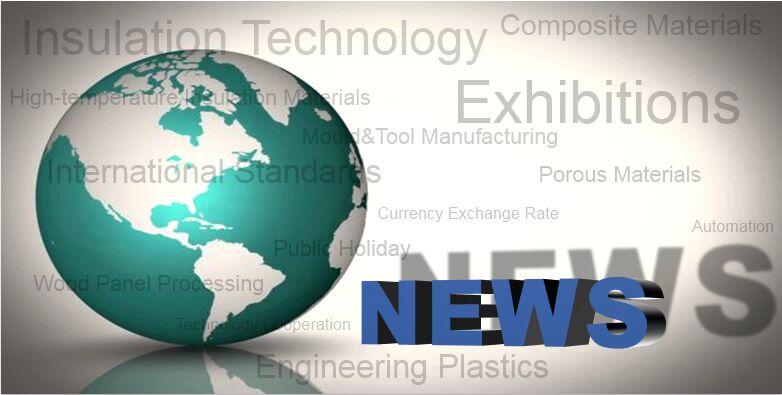INFOCENTER
How to select the Correct Heat Insulation Materials
How to select the Correct Heat Insulation Materials
Present mold systems require heat as part of the manufacturing process. In the plastics industry, heaters are the key ingredient to maintaining temperature of the molten plastic. The plastic flows through the mold base, sprue nozzle, manifold, into a die head, or through an injection barrel. Without heat, the mold cannot operate as a forming system.
The heater should be considered from the start, as it is a fundamental element of the overall system. There are various heater configurations available. However, when looking at the heater from an insulation standpoint, there are two common heater types available for industrial use: ceramic knuckle and mineral insulated.
When considering heater type, one must understand the performance capabilities and limitations of each heater type. The part geometry, temperature and heat-up time requirements generally dictate the type of heater to use.
Each of the three heater types has distinctive characteristics. The unique material that differentiates these heaters is the interior insulation that provides the needed dielectric strength while the heater heats the part. The insulation in each heater plays a significant role in determining heater lifetime and performance.
Ceramic
Steatite is a type of ceramic comprised primarily of aluminum oxide (Al2O3), silica (SiO2) and magnesium oxide (MgO). Steatite is formed when these materials are mixed in the correct proportion and fired at a certain temperature. L-3 and L-5 are the most common grades of steatite. L-3 is used in most applications. However, L-5 is recommended where low electrical loss is critical. The ceramic is formed using industry specific processing methods and can readily be machined or net shape sintered into a variety of designs.
Ceramic knuckle band heaters are made with the L-5 type of material due to its superior electrical characteristics. According to Jim Shaner of Saxonburg Ceramics Inc., “A specific L-5 formula is prepared, which contains the correct proportions of Al2O3, SiO2, and MgO, along with binders, plasticizers, release agents, and/or other additives to aid in the processing. The ingredients are then mixed for a specified period of time and the batch is sent to the presses.” A press capable of pressures up to 30 tons is used to press the powder into its finished shape. The final step is to fire the ceramic to a temperature of 2320ºF.
The ceramic knuckle heater is designed to handle up to 760ºC (1400ºF). This level of performance is a direct result of the heaters’ excellent insulating properties of the ceramic knuckle segments. The knuckles work together similar to a ball-and-socket in the knee or elbow to create the heater diameter. Unfortunately, the ceramic’s strength is also its weakness as it stores heat generated by the element wire, which creates difficulty in controlling the heater temperature. This can lead to unnecessary scrap, particularly in the early stages of the plastic manufacturing process.
Mineral Insulation
Mineral insulated heaters dominate the market with respect to overall heater performance. Mineral insulated heaters consist of magnesium oxide known as MgO, which is the oxide of metal magnesium. Magnesium oxide or mineral insulation is a fine granular powder in bulk form. It is layered between the resistance element and the heater sheath. In many mineral insulated heaters, the MgO is compacted into a thin solid layer. The compacted MgO offers excellent thermal conductivity and great dielectric strength.
MgO has an upper useful temperature limit of more than 1094°C (2000°F). This is usually never reached, because the heater’s nichrome resistance wire has a much lower operating temperature of about 870°C (1598°F). As a rule of thumb, the temperature of the mineral-insulated band should not exceed 760°C (1400°F). The ability of a thin layer of insulation to resist current flow, yet allow quick heat transfer, creates an efficient performance heater.
With a heater thickness of only 5/32-inch, a mineral insulated heater provides rapid heat-up and cool down compared to mica and ceramic knuckle heaters. The compacted insulation also allows for higher watt densities that enable the heater to heat up the part faster, which means a reduction in scrap upon machine startup. The mineral insulated band is highly responsive to precise heat control due to its thin construction and low mass. Less thermal lag and minimum temperature overshoot result in faster startup and reduced cycle time. Other heaters that utilize mineral insulation are tubular, cable and cartridge heaters.
Choosing the correct heater for an application is important especially when operated at elevated temperatures. When characteristics such as temperature, performance and efficiency are important, the breakdown of these insulation material types will help guide the buyer into choosing the correct heater for their application.
For more information about Keeprecision Thermal Insulation technologies, please contact our Sales Department
Source: www.china-ogpe.com www.moldmakingtechnology.com








